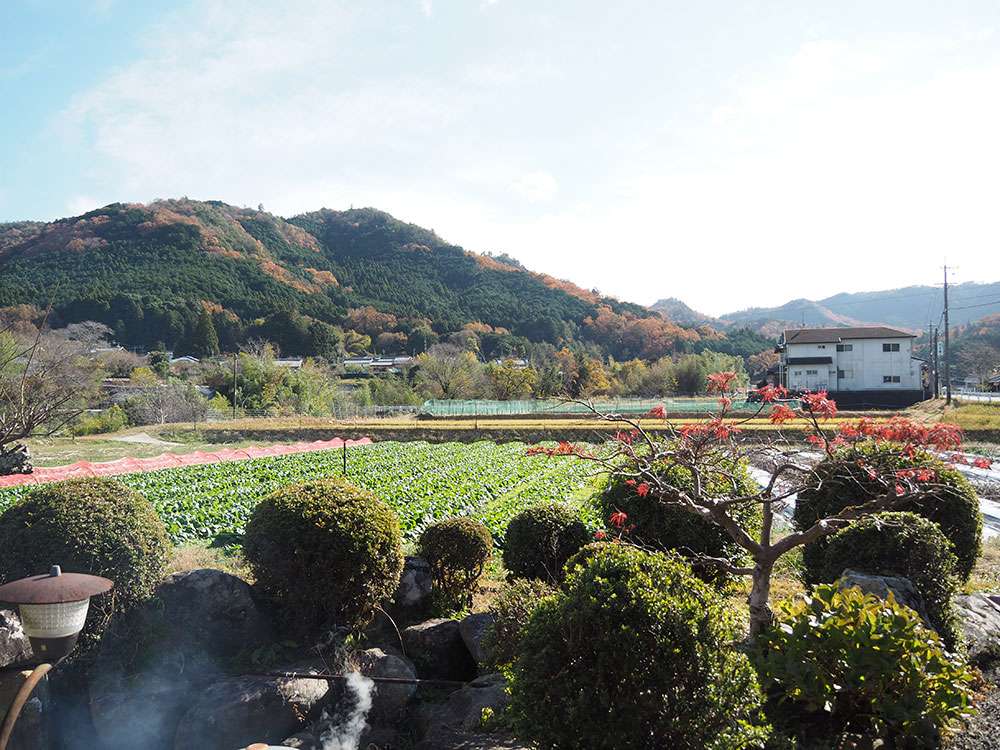
Through Farming Experiences in Nabari, you can enjoy a variety of seasonal programs. In this article, we introduce one available in December.
More about Farming Experiences in Nabari
Experience Traditional Japanese New Year Preparations at a Farmhouse
On a crisp December day, we gathered at Yoshidaya, a private vacation rental in Nabari. The soothing sound of crackling firewood in the hibachi stove and the tranquil view of the satoyama countryside through the veranda created a perfectly peaceful setting to start the day’s activities.
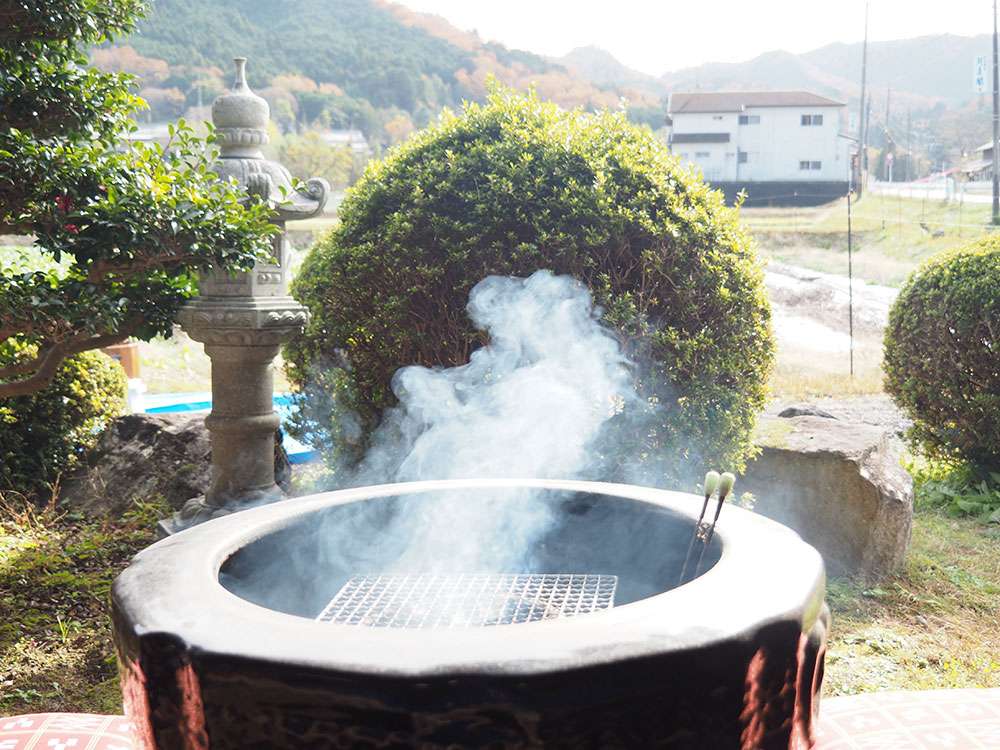
Since it was everyone’s first visit to Nabari, the tour planner, Mr. Kawai, introduced us to the area. Despite being just an hour by train from Osaka, Nabari boasts abundant nature. Surrounded by mountains, this basin offers a climate and terrain ideal for producing delicious rice, vegetables, sake, and beef. “It’s no wonder Nabari has been declared an Organic Village,” Mr. Kawai explained.
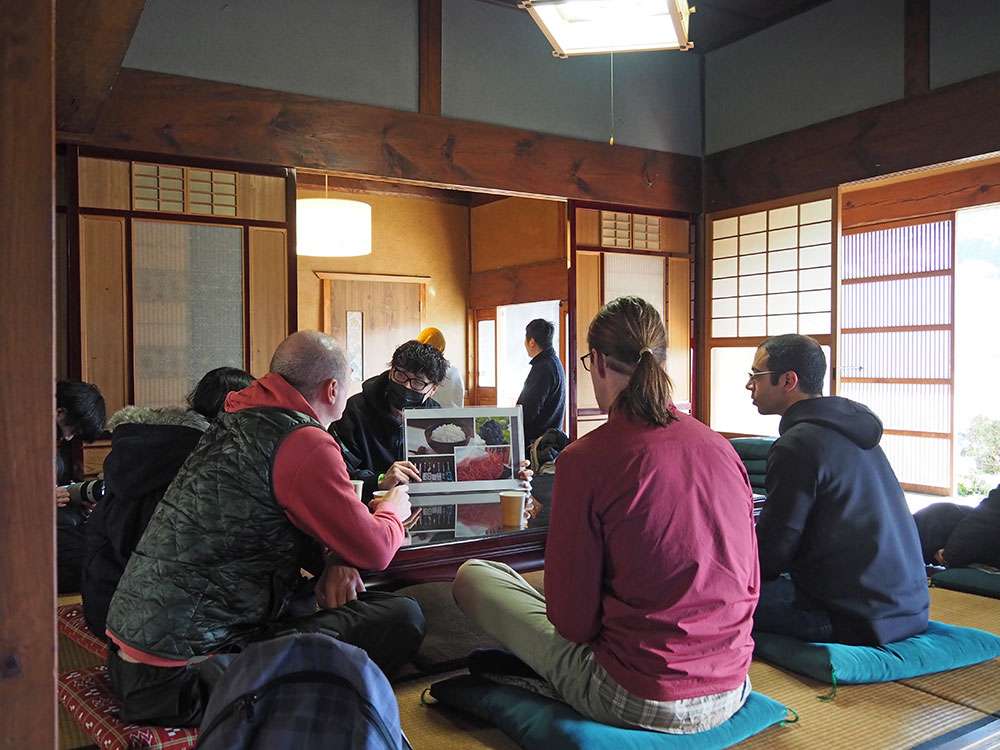
Mochi Pounding
Our first activity was mochi pounding using a traditional wooden mallet and mortar. Mochi is an important food in Japan, especially for New Year celebrations and other special occasions, where it is eaten or offered to the gods.
For this experience, we used freshly harvested glutinous rice grown organically in autumn. Before we began, Kami-chan, who runs the organic farm Kami no Itazura, shared her story.
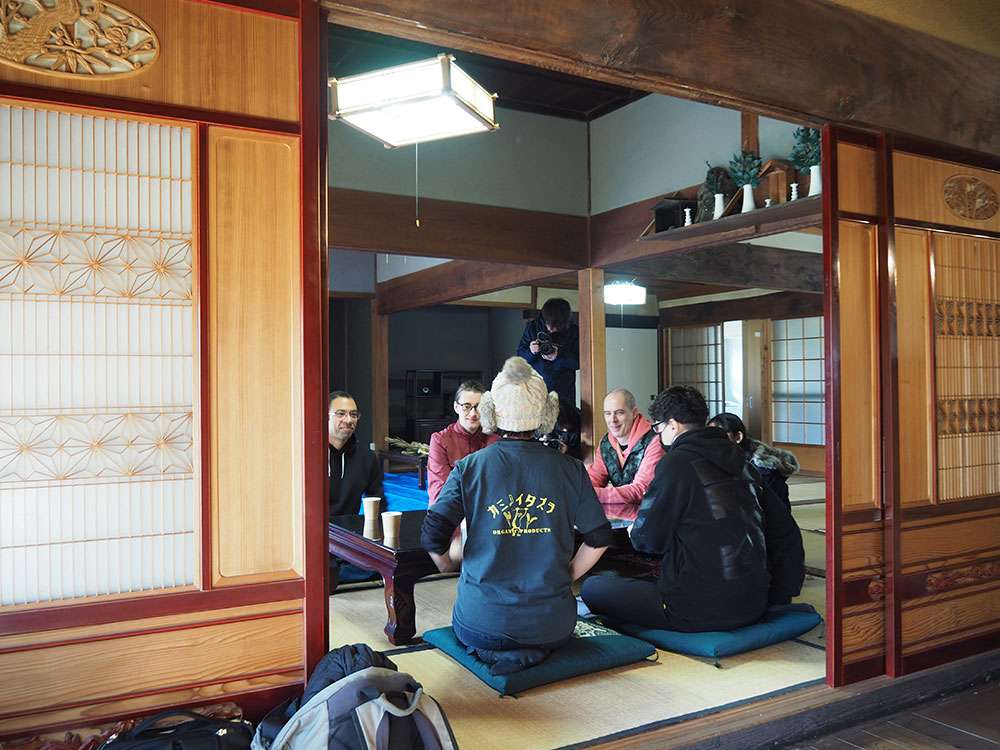
In Nabari, a region famous for producing Iga Rice, which has earned a Special A Rank, Kami-chan cultivates rice and vegetables using organic methods. Using such carefully grown, high-quality glutinous rice for mochi is truly a luxury!
Mochi is made by steaming glutinous rice and pounding it in a mortar while it’s still hot—a traditional method said to date back over 2,000 years.
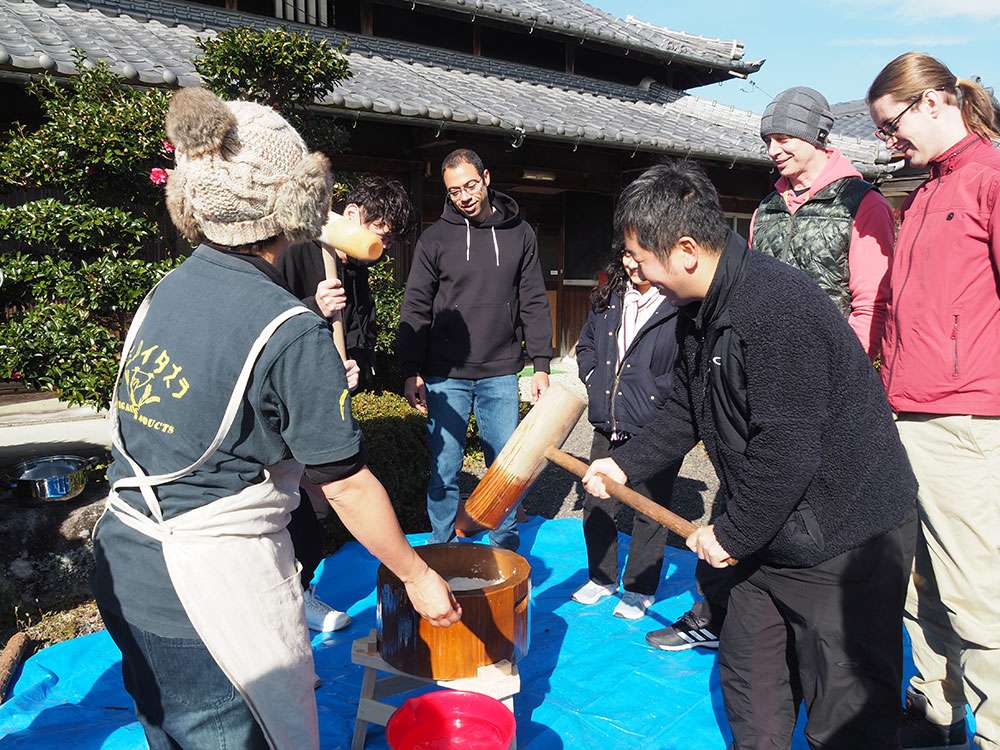
Out in the yard, the steamed rice emitted plumes of steam as it was transferred to the mortar. First, we watched a demonstration: one person pounds the rice with a mallet, while another turns it between strikes to ensure it’s evenly pounded. The teamwork required for this process was impressive, as the two moved in perfect rhythm.
“Who wants to give it a try?”
Taking turns, we eagerly stepped up to the challenge. Although most of us had seen mochi pounding in videos, few had ever tried it for themselves. To synchronize our movements, we chanted the name of the person flipping the rice, creating a fun rhythm: pound, pound, flip, pound, pound, flip!
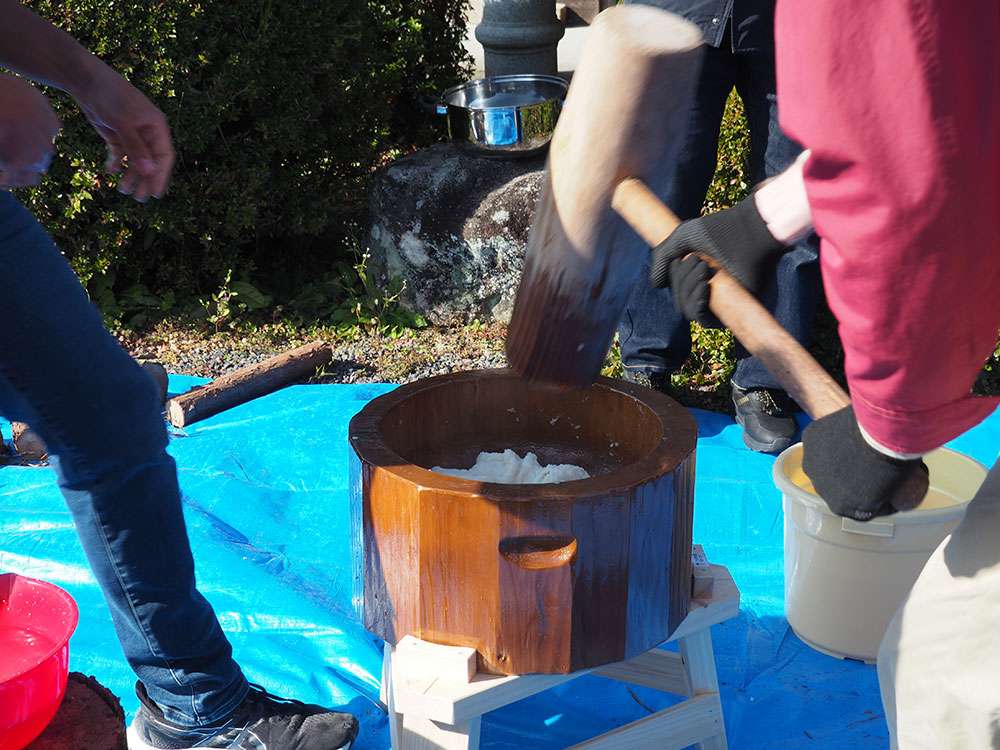
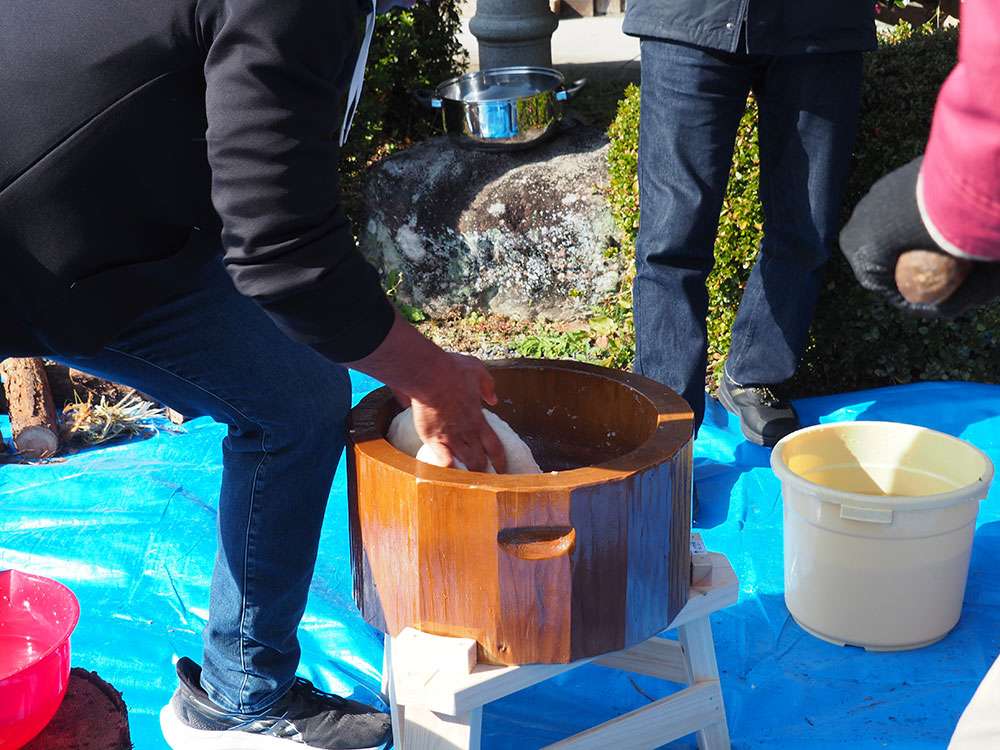
Thanks to our teamwork, we smoothly pounded the rice into delicious-looking mochi.
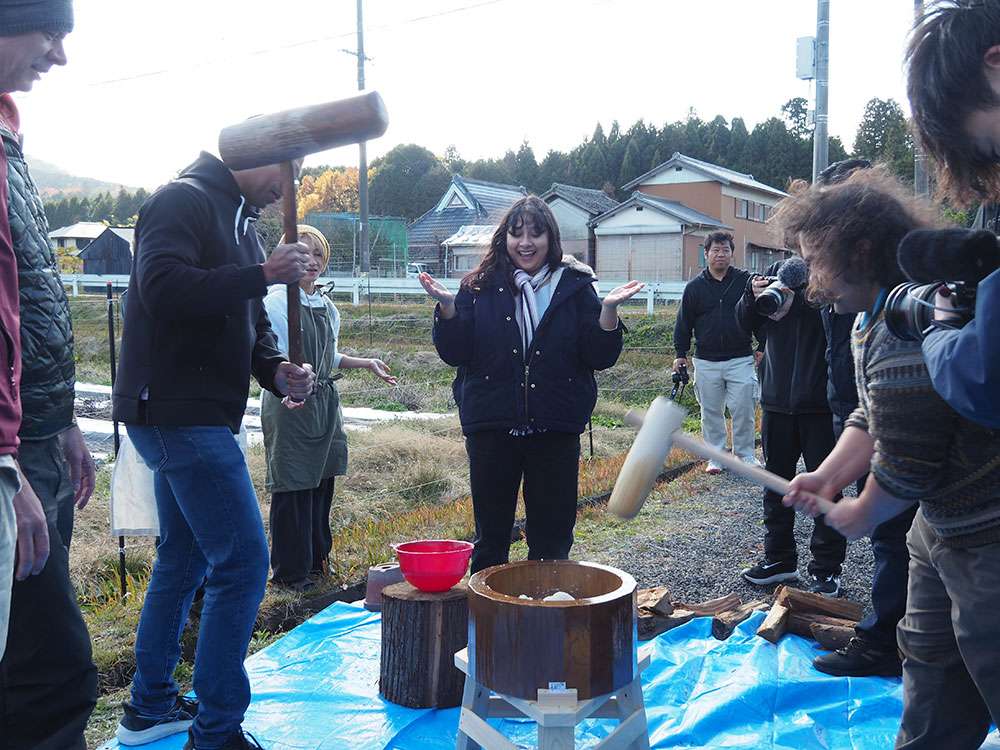
Back inside, we shaped the freshly pounded, warm mochi into smaller pieces while chatting and occasionally sneaking a bite. It was a delightful moment.
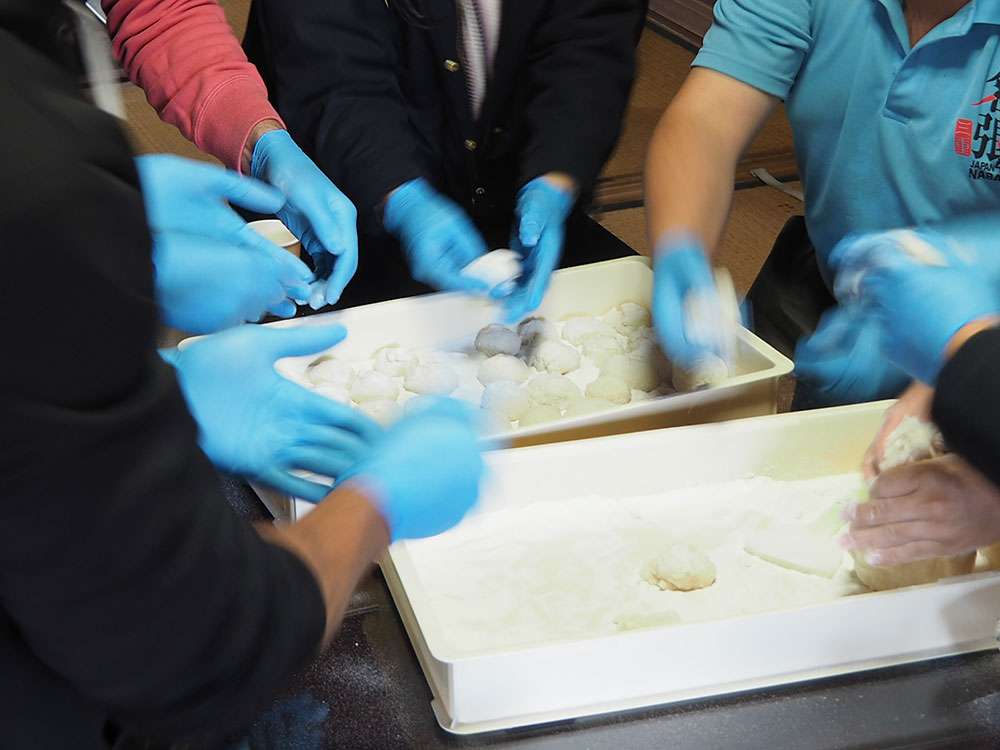
Finally, we got to taste the mochi we had made, served with three different toppings: kinako (roasted soybean flour) with sugar, soy sauce with sugar, and grated daikon radish. We were also offered delicious miso soup.
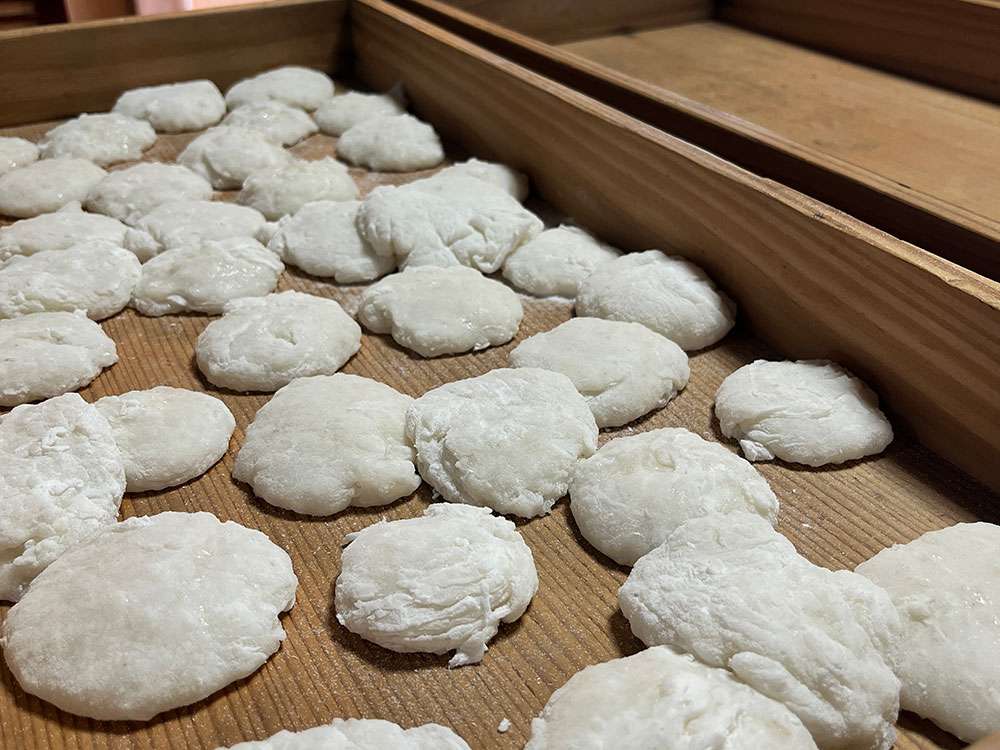
Freshly pounded mochi is absolutely scrumptious! For some participants, it was their first time trying mochi with grated daikon radish. They hesitated at first but were amazed by its unique flavor. Among the toppings, the grated radish with natural soy sauce was the crowd favorite.
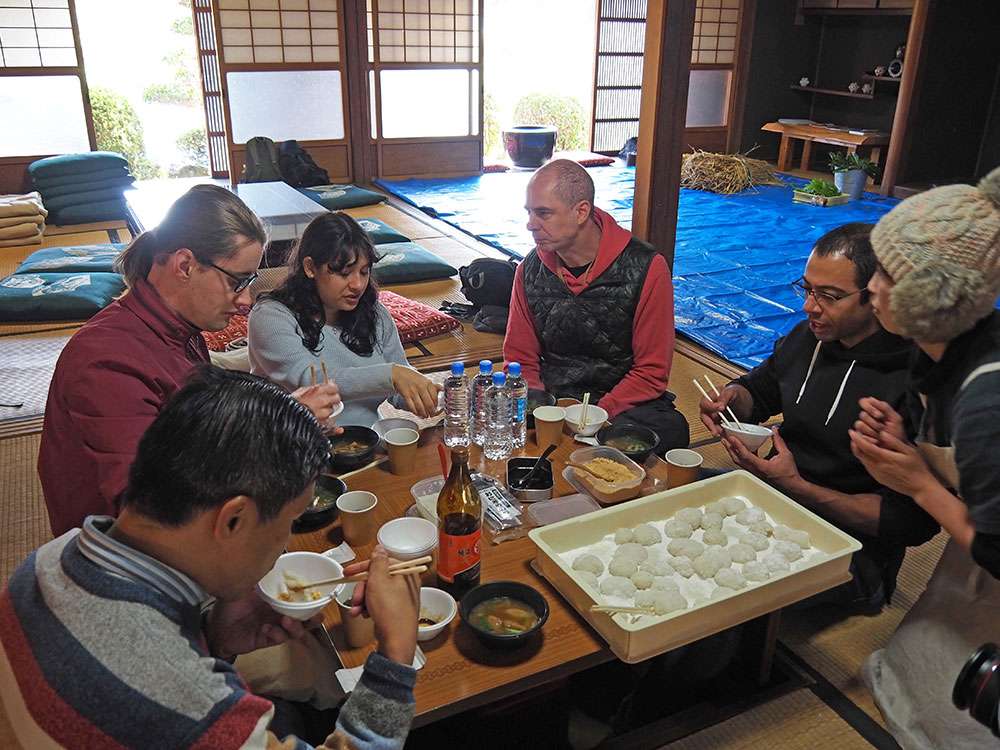
After enjoying the mochi, we took a leisurely stroll around the farmhouse. Under the clear blue sky, we walked through the satoyama, a landscape that retains and showcases Japan’s traditional rural charm.
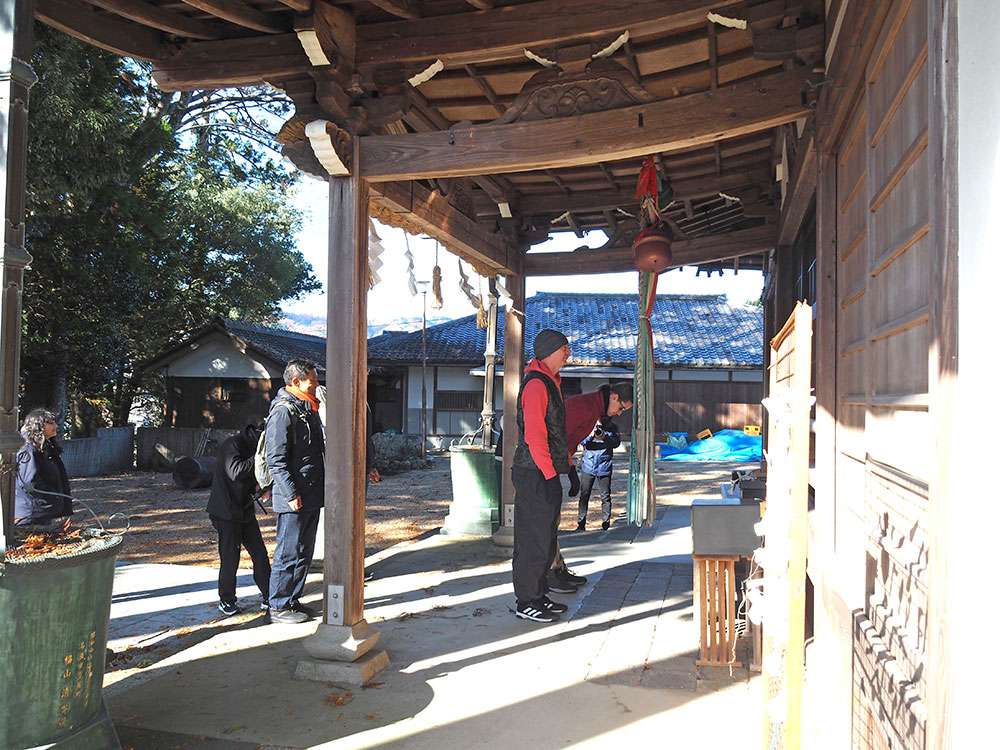
We encountered a friendly local farmer, visited the nearby Shrine, and learned the proper way to pray. The relaxing walk warmed us up, preparing us for the next activity.
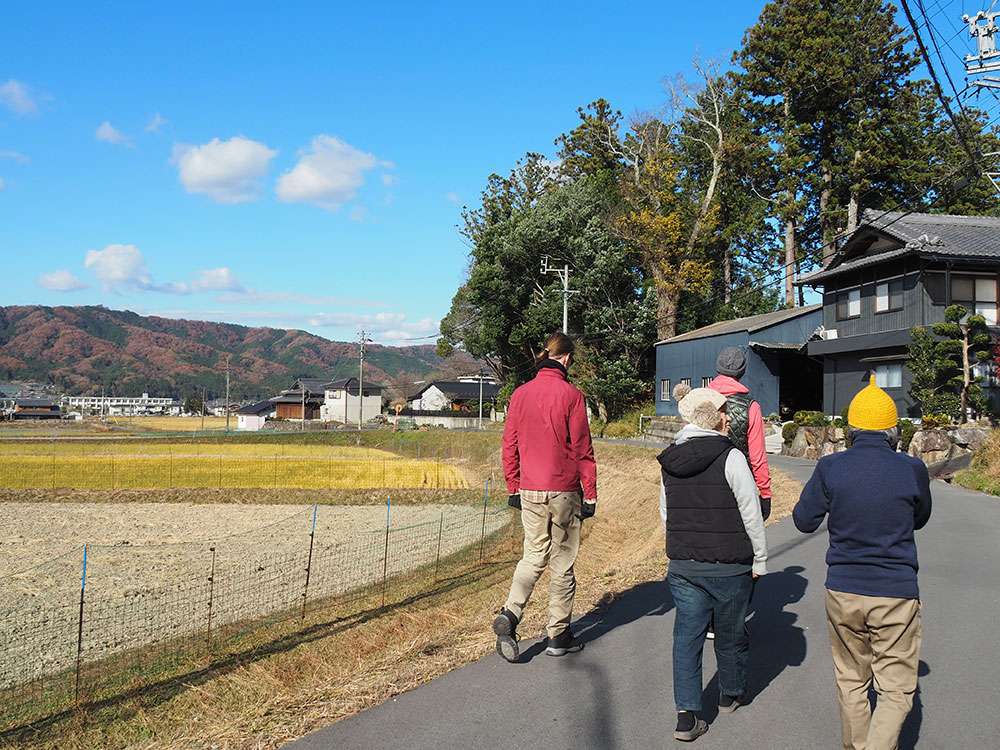
Making Shimenawa
Next, we tried making shimenawa, a traditional Japanese New Year decoration. These are wreath-like ornaments hung at the entrances of homes from late December to early January. Historically, shimenawa making was a side job for rice farmers during the winter when they couldn’t farm. In recent years, however, fewer farmers are able to make them due to the aging populations.
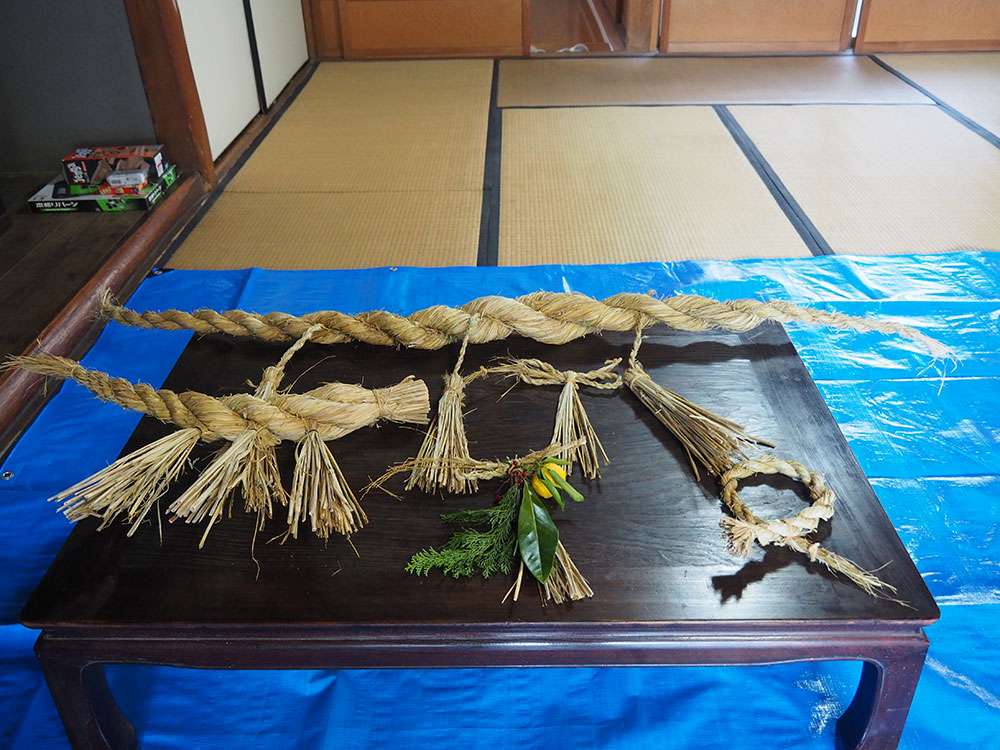
Our instructor for this activity was Hory, the owner of Yoshidaya and a shimenawa expert. Sitting around a large pile of straw on tatami mats, we learned the process from Kami-chan and Hory.
This time, we made a small shimenawa called tombo (dragonfly), named for its resemblance to the insect. Kami-chan explained, “First, choose three well-shaped straws, bundle them like this, and twist them together.”
Someone asked, “Is this straw okay?”
“Hmm, not quite!” Kami-chan replied with a laugh. Even choosing the right straw was a challenge!
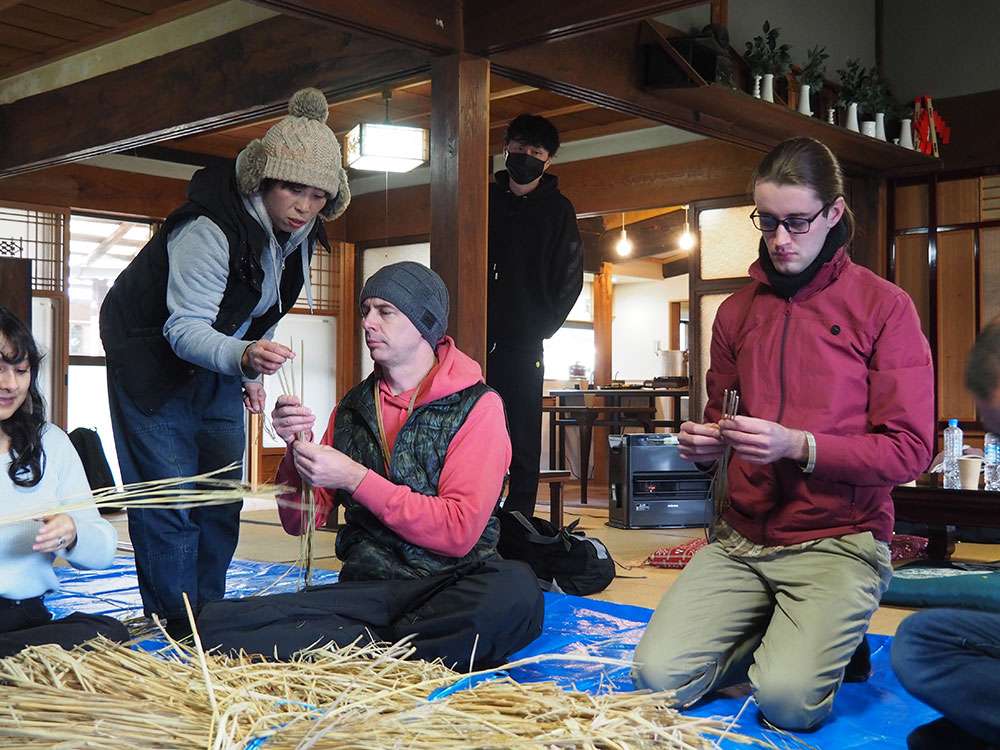
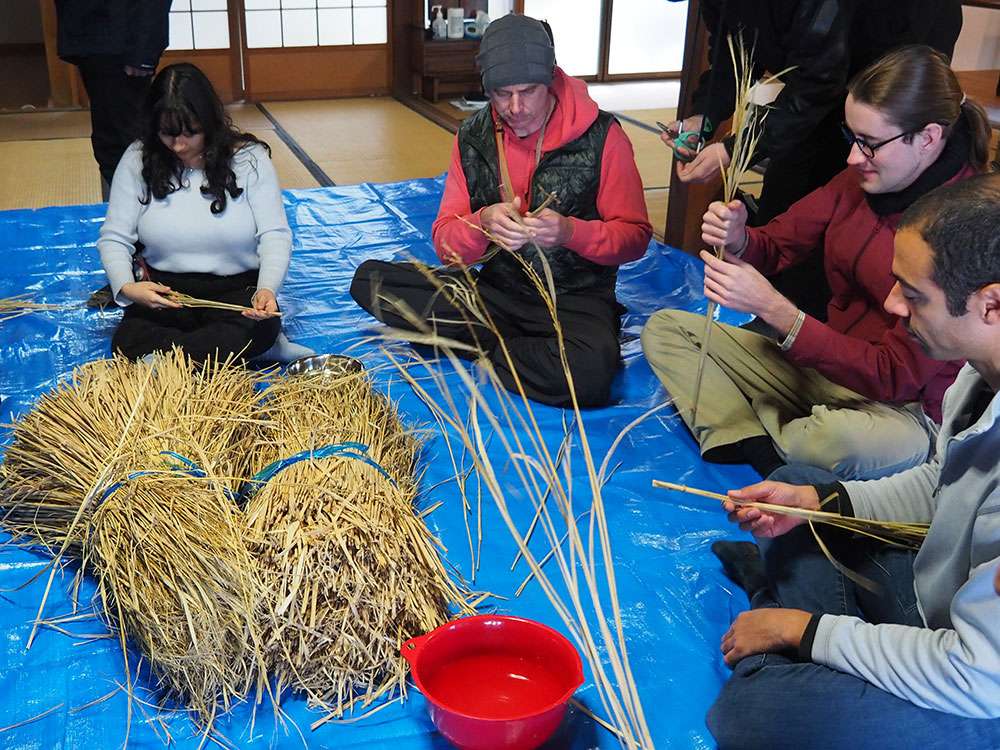
We bundled and braided it into a rope. Despite Hory demonstrating with ease—even using his feet to assist—we struggled as first-timers.
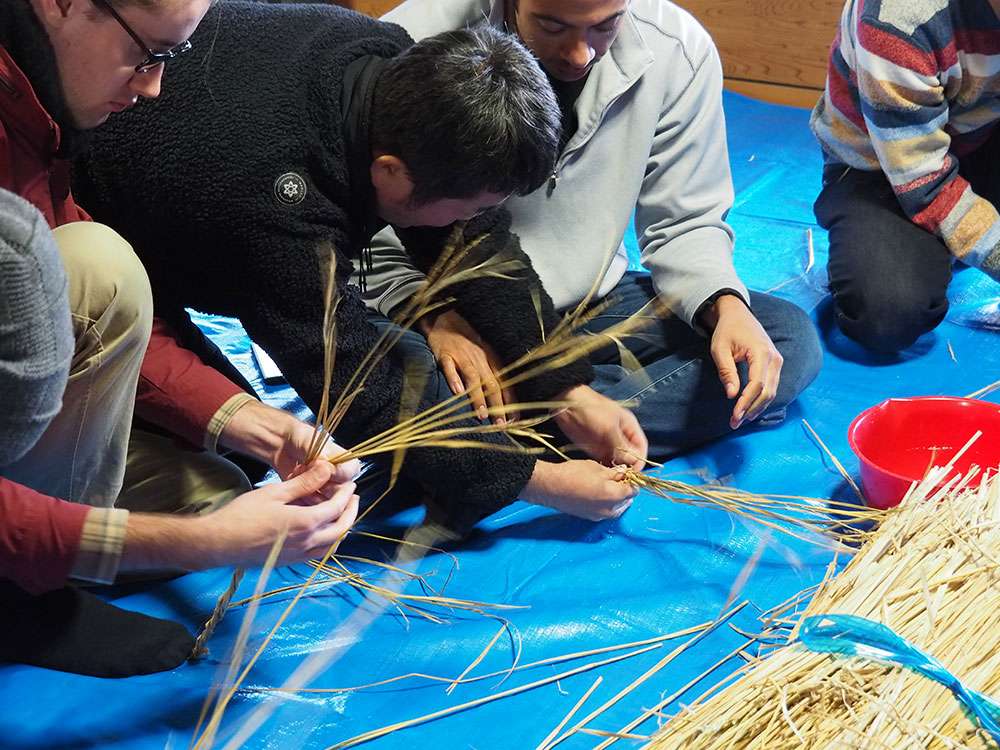
With hands-on guidance, we slowly got the hang of it. Eventually, we completed our ropes and shaped them into dragonfly designs.
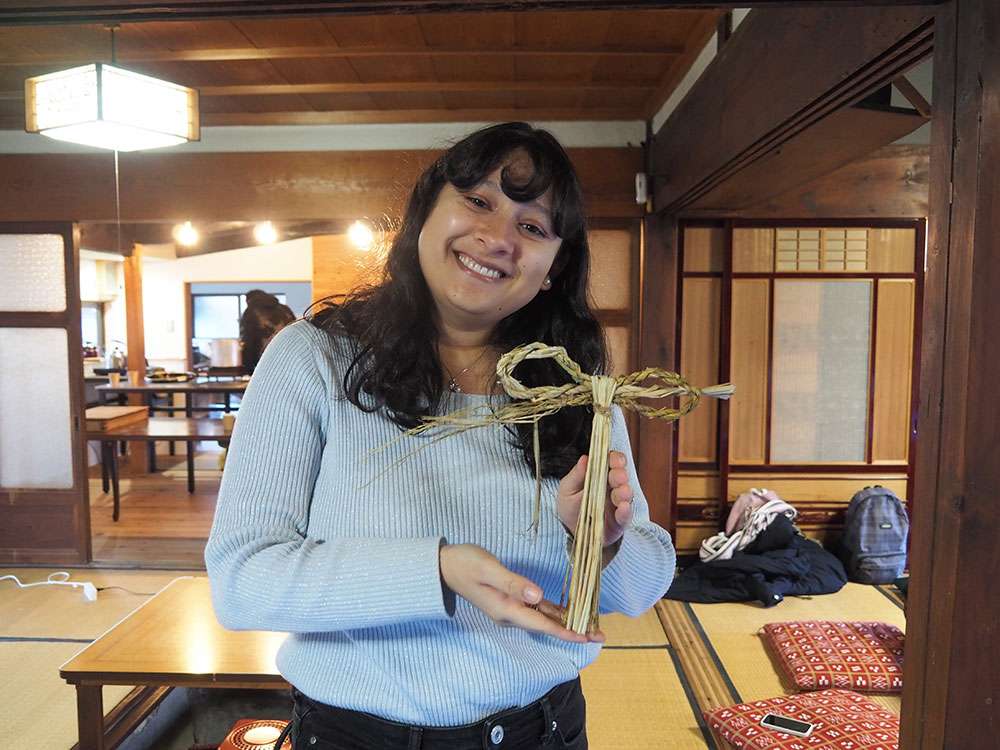
For the finishing touch, we decorated the shimenawa with plants like nanten, urajiro, and yuzuriha. The simple straw adorned with green leaves and red berries creates a charming accent.
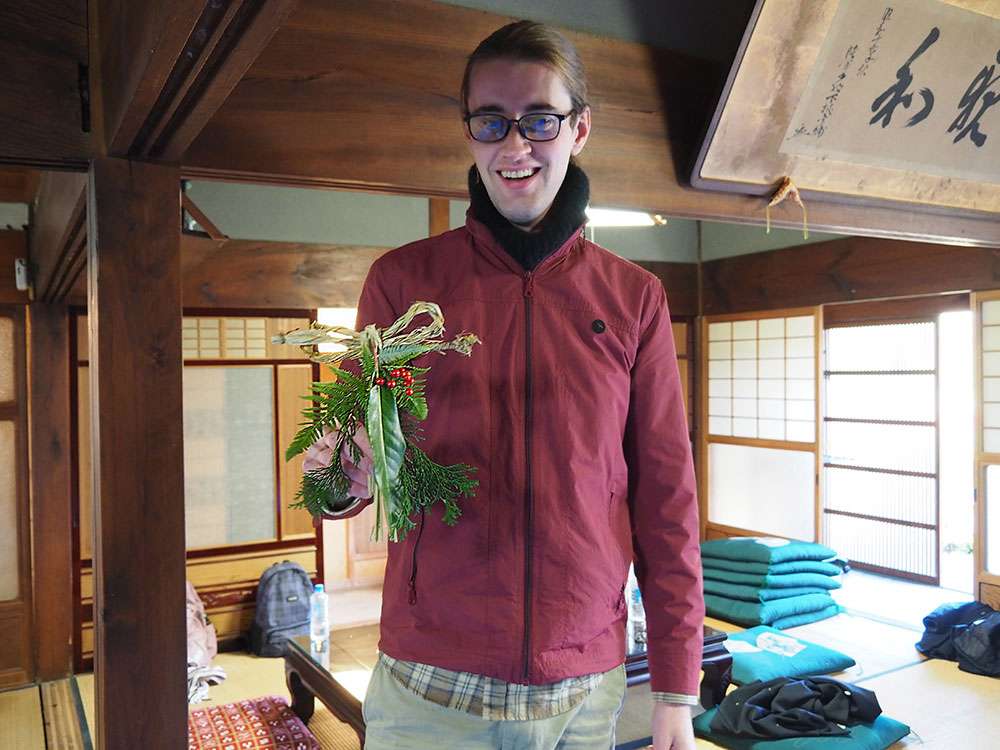
Everyone started asking questions.
“Why do you use these plants as decorations?”
Kami-chan explained that,
“Each plant has a symbolic meaning: nanten wards off disasters, urajiro represents longevity, and yuzuriha signifies prosperity for future generations.”
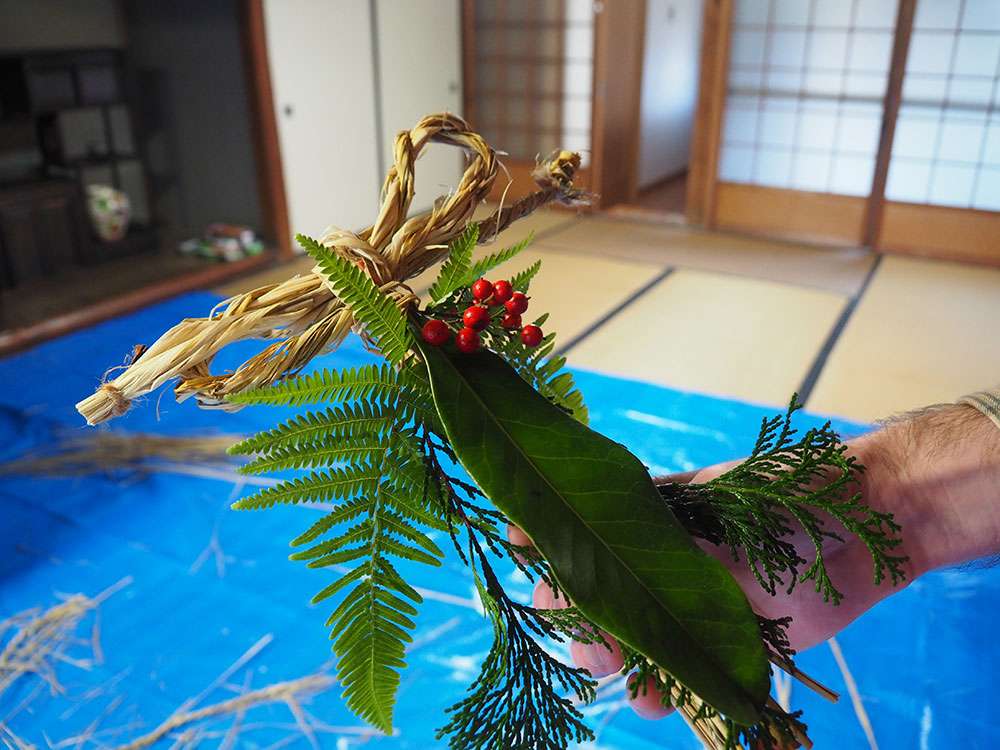
In modern Japan, most people prepare for the New Year by purchasing ready-made mochi and shimenawa. However, this tour offered us the chance to experience traditional New Year preparations at a farmhouse in the satoyama countryside!
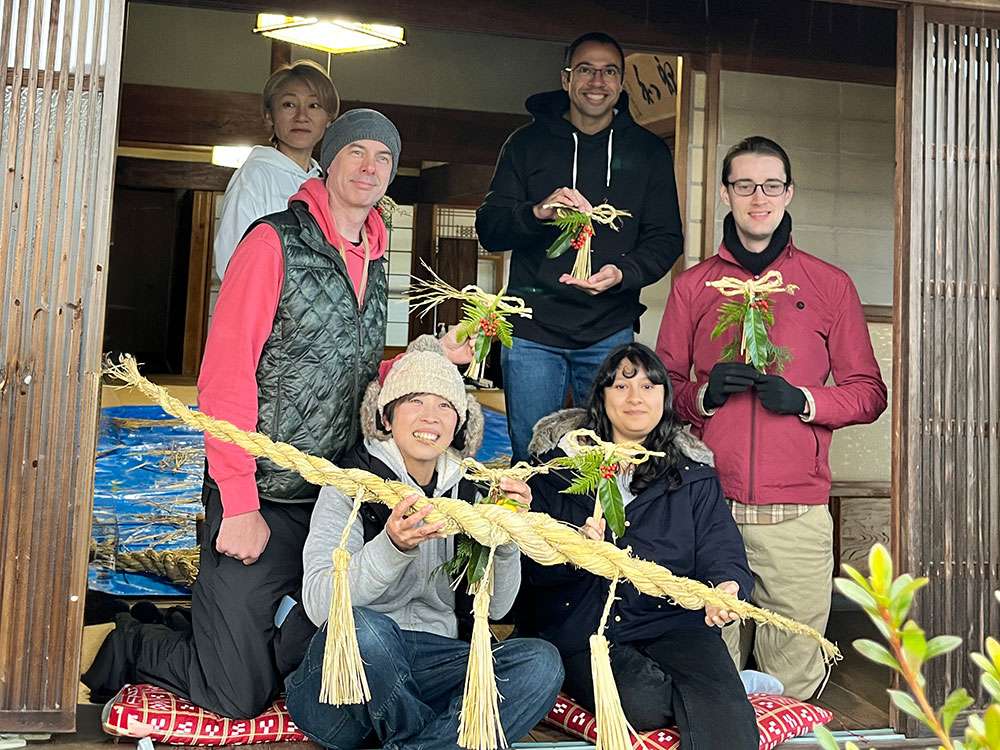
Meeting place: Kintetsu Nabari Station (pick-up available), or Yoshidaya, a private vacation rental
Duration: 2.5 hours for mochi pounding, 2 hours for shimenawa making (the walking time is not included)
A multi-day tour is available by combining with other activities.
